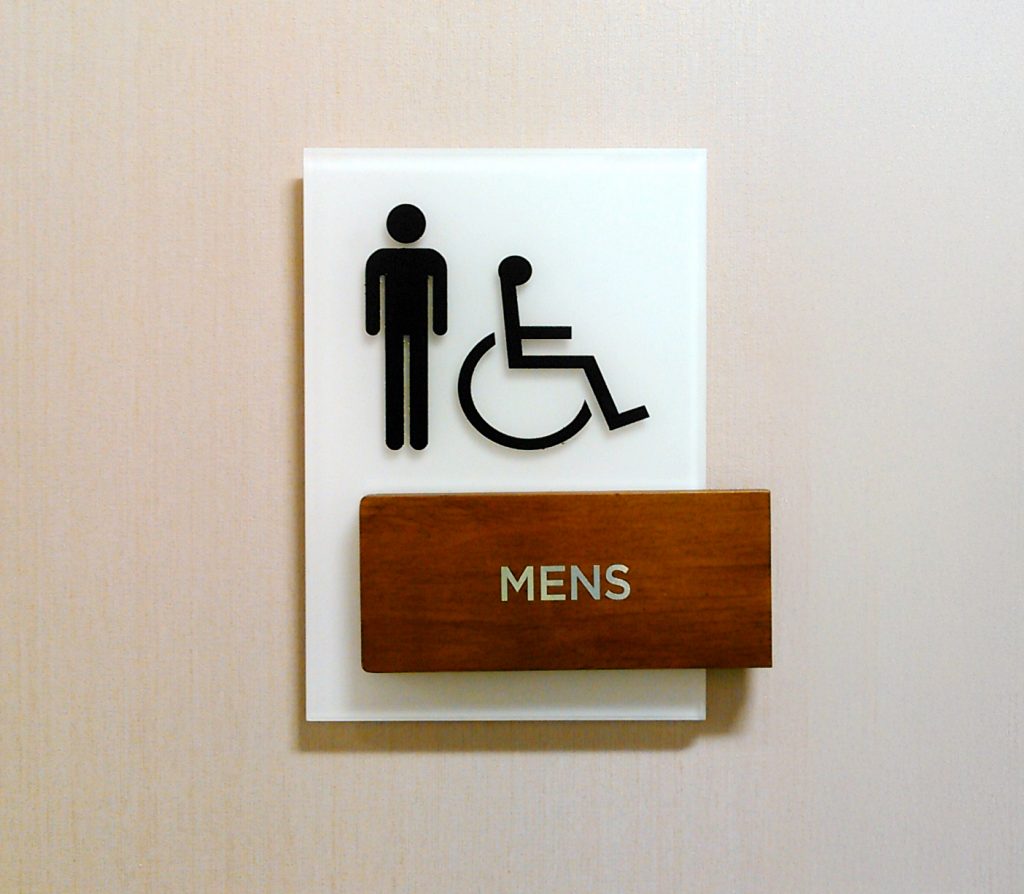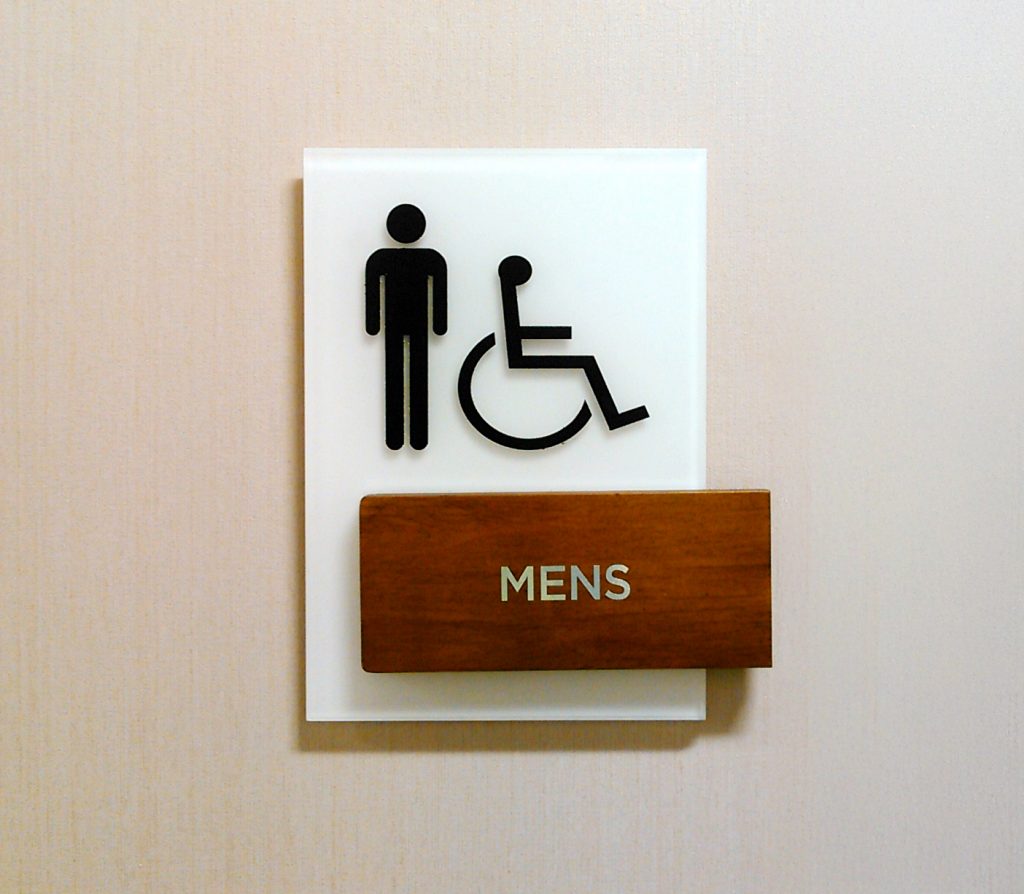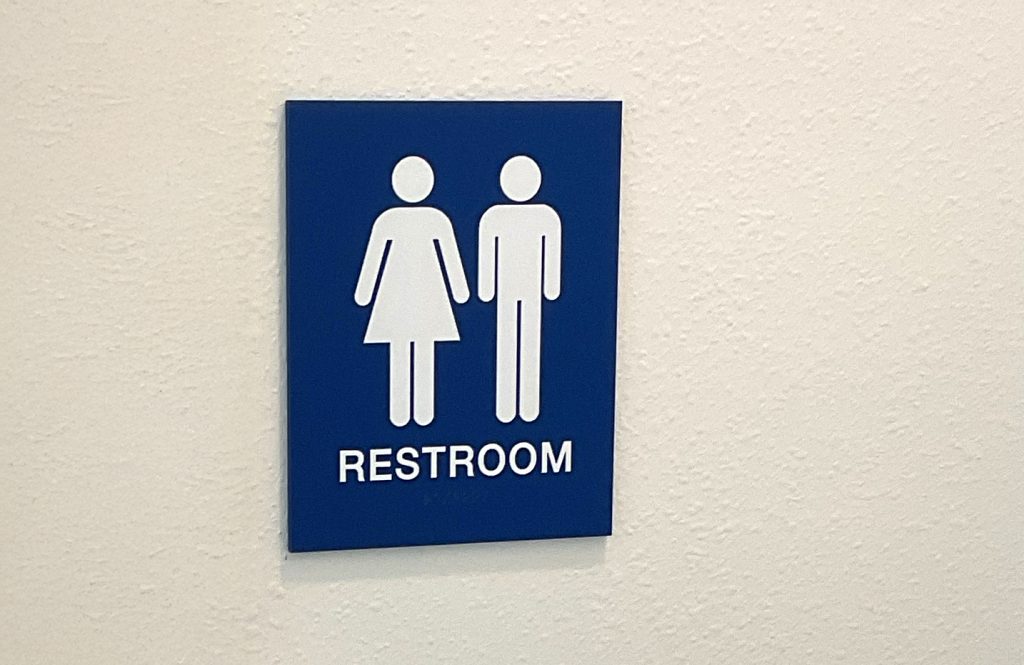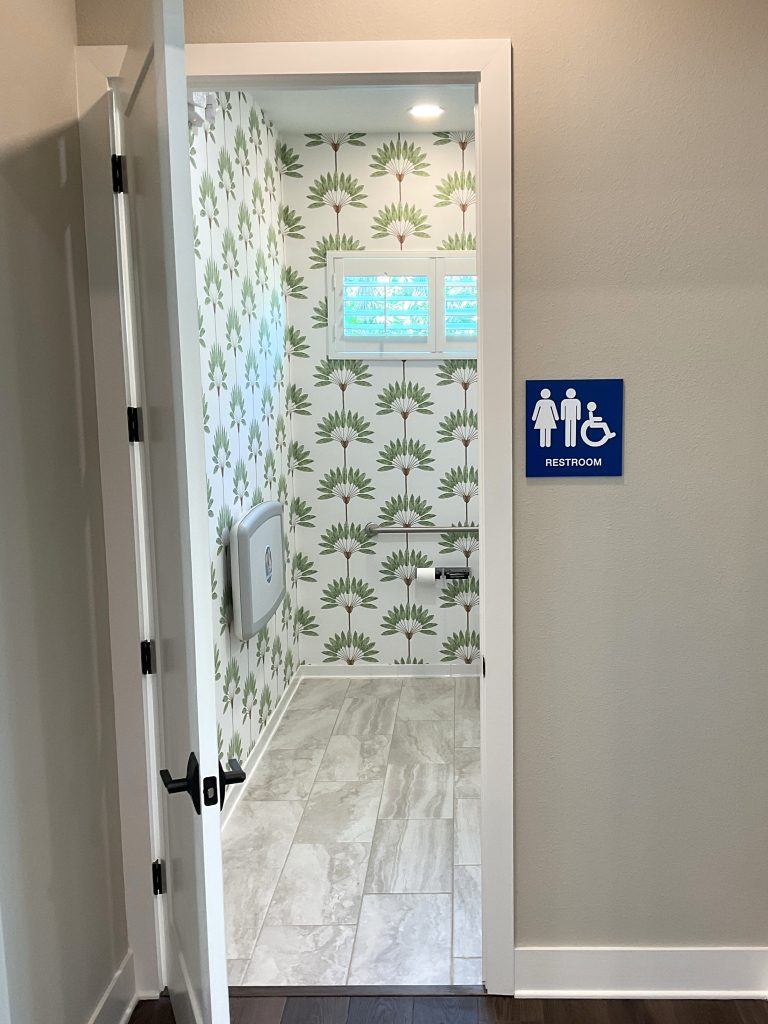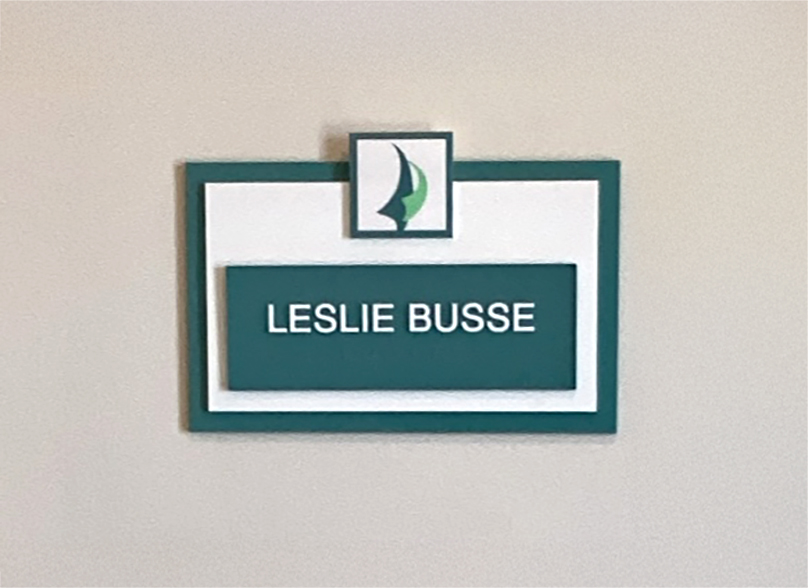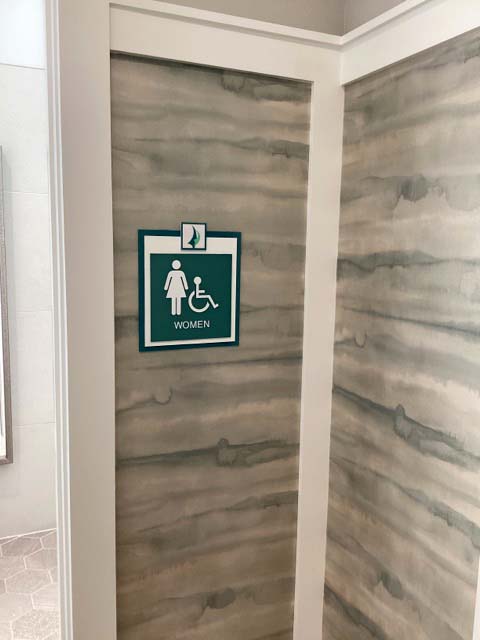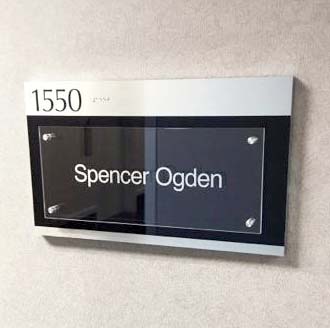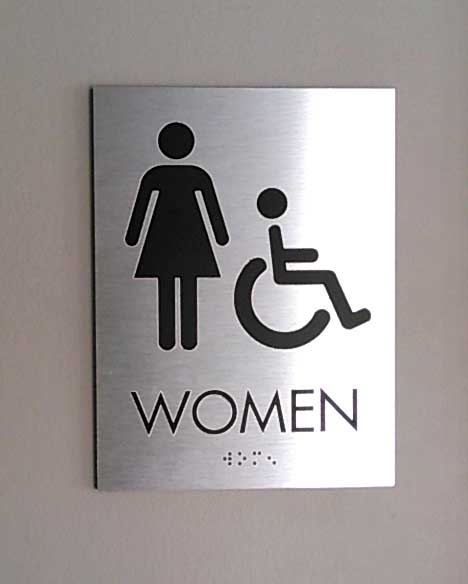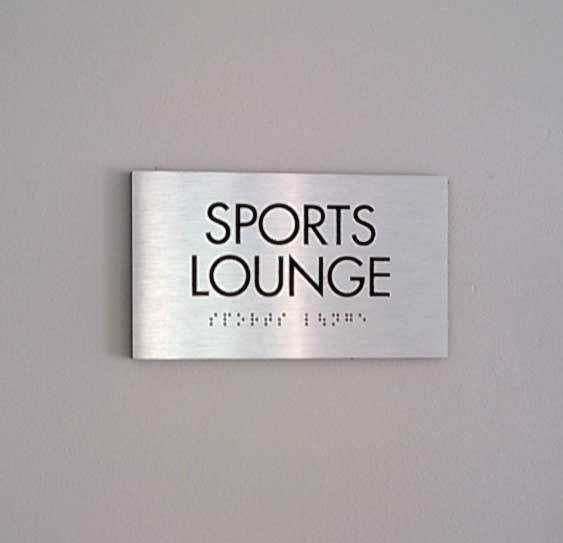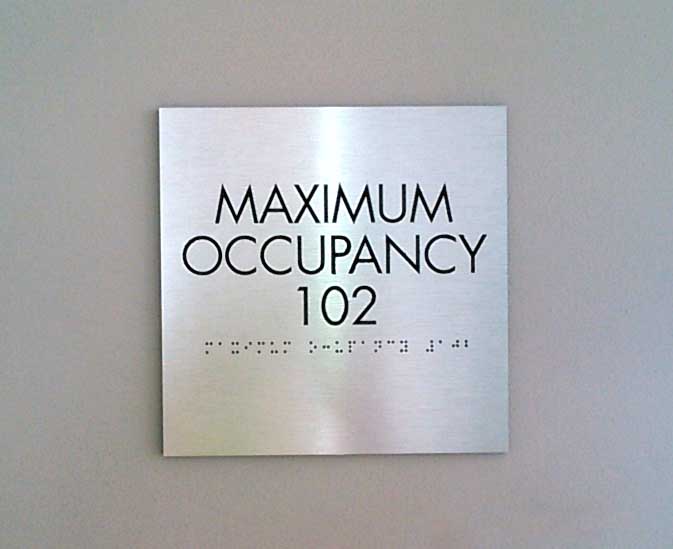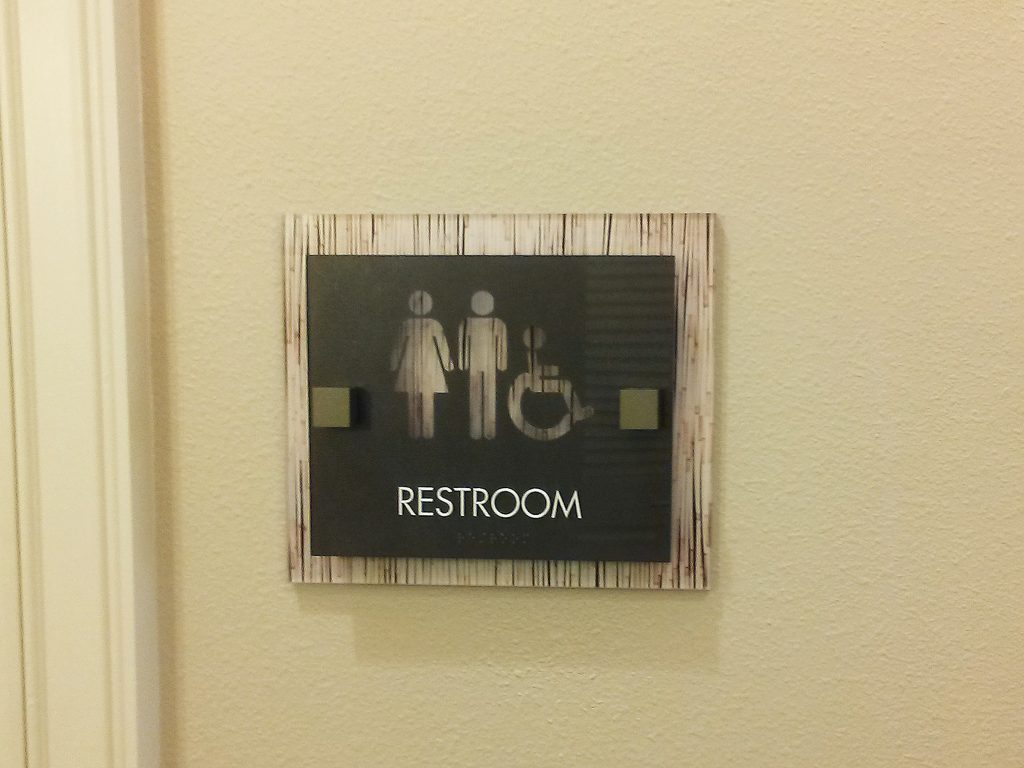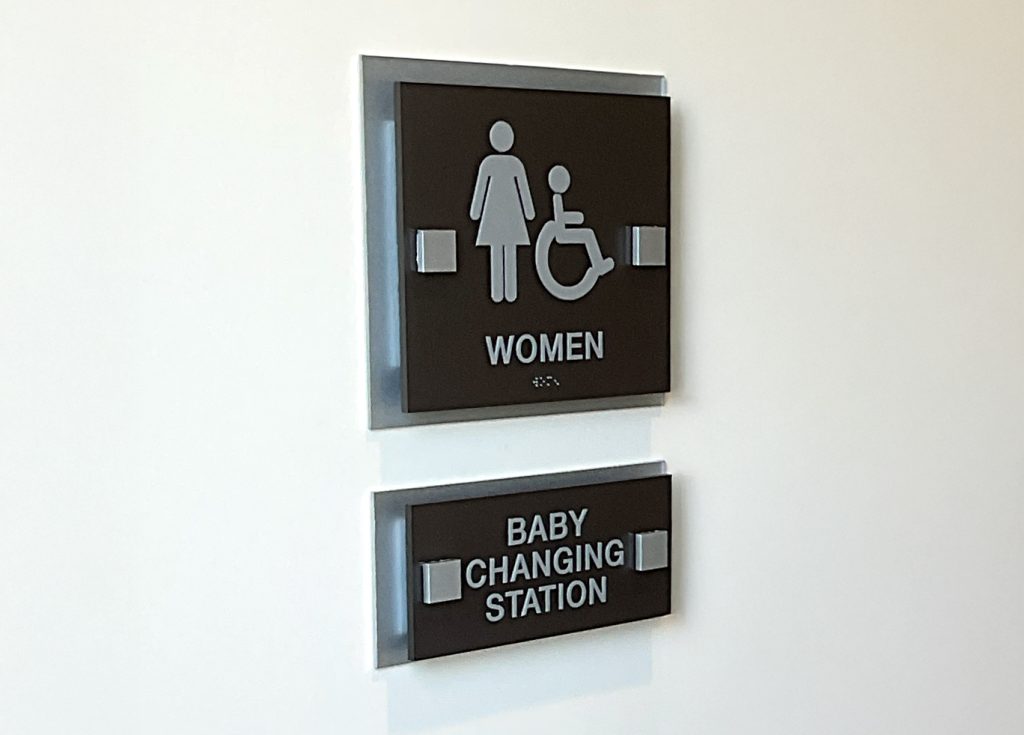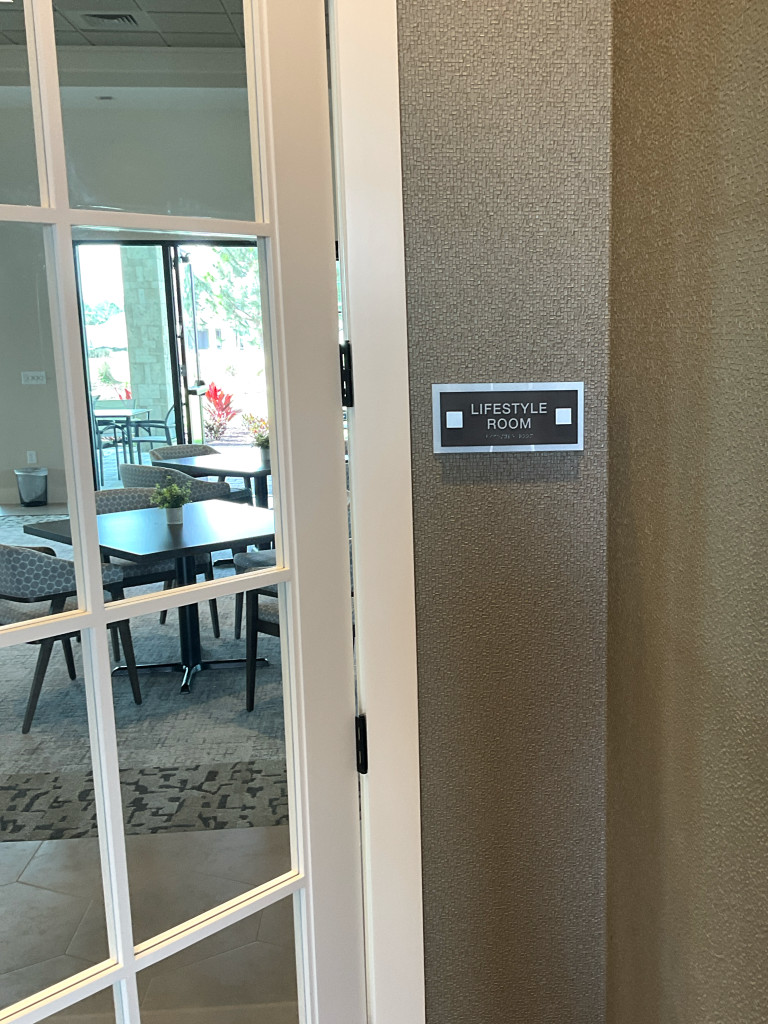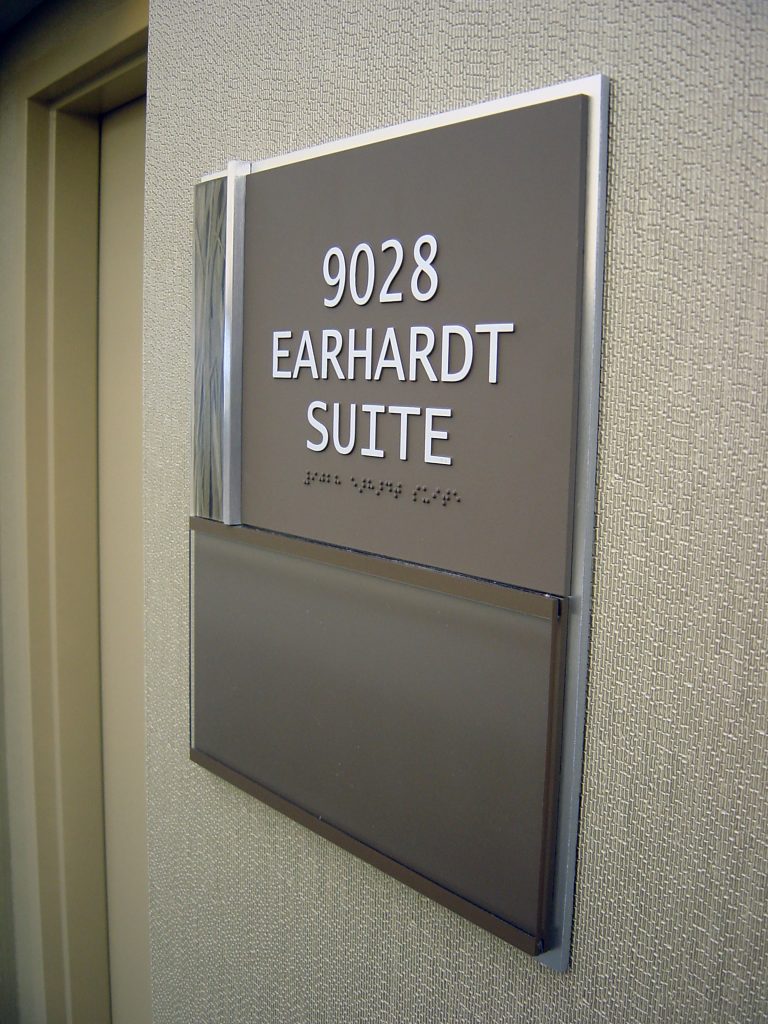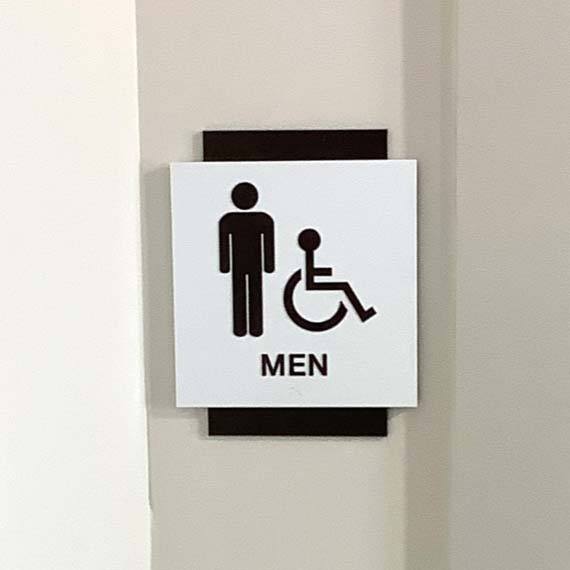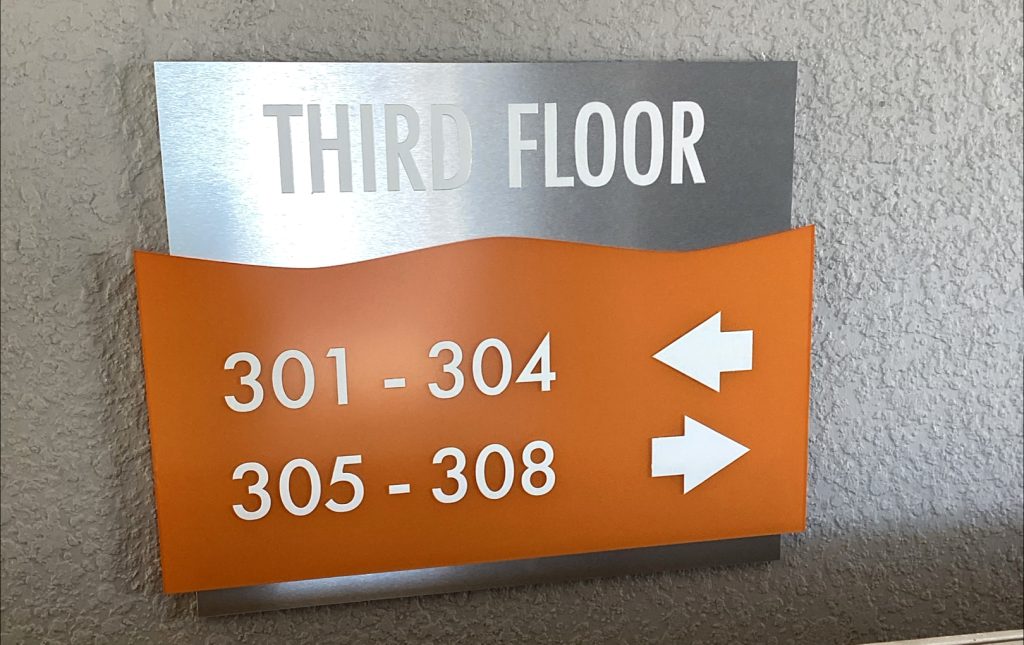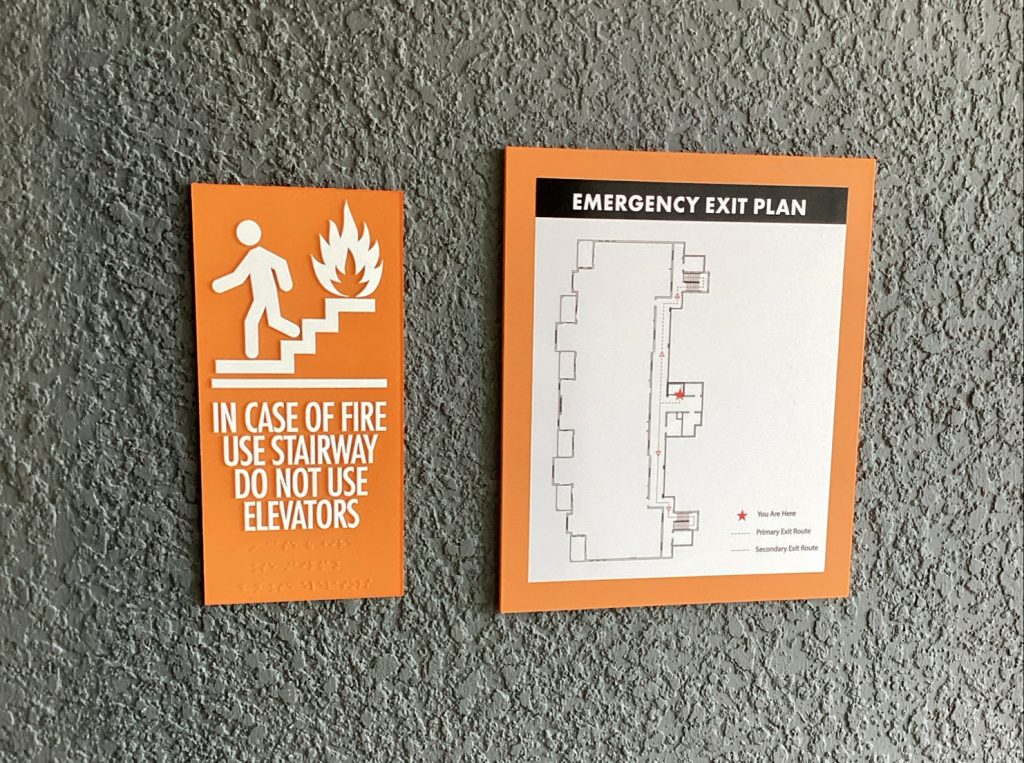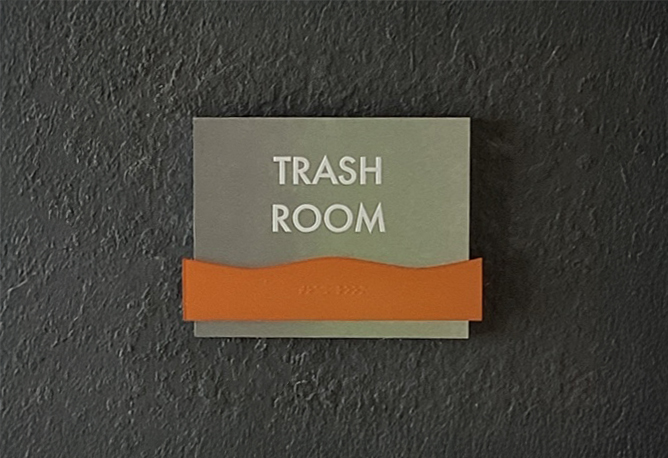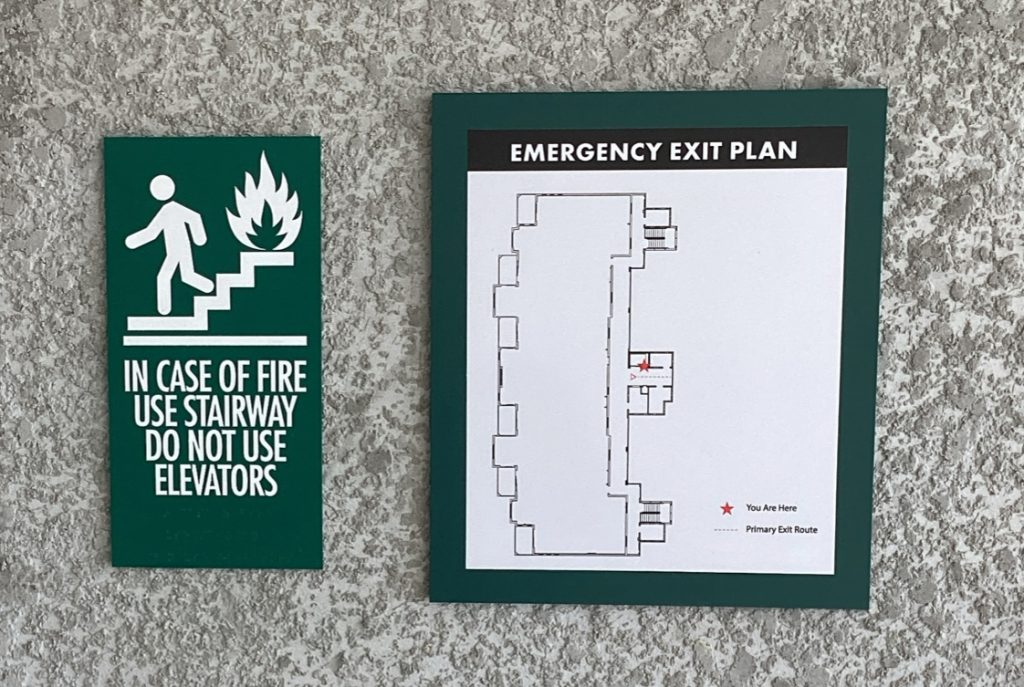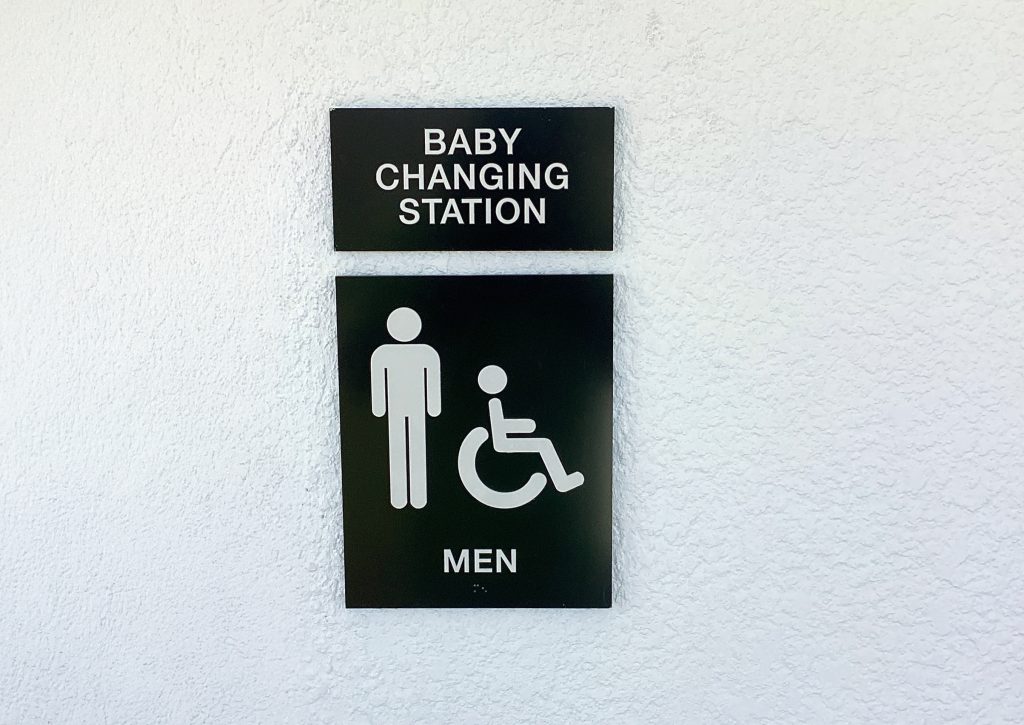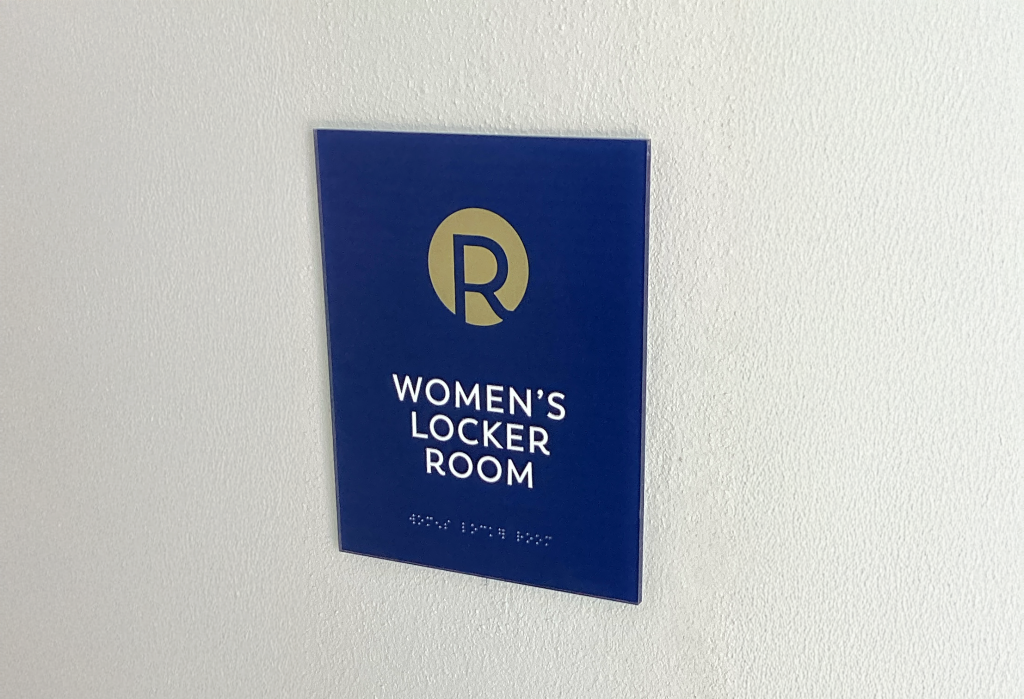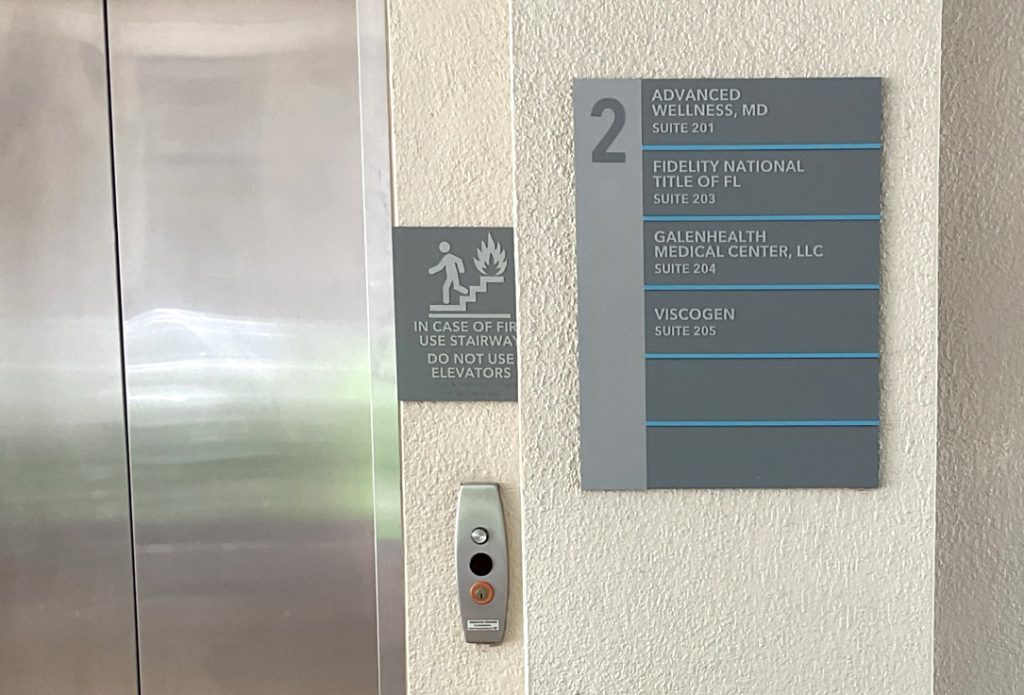ADA Signage refers to signage compliant with the Americans With Disabilities Act, (2010), which was passed by the U.S. Department of Justice in 2010. In general, if a sign identifies a permanent room in a building – including exits, bathrooms or stairwells – or indicates wayfinding directions for common functional spaces in a building, the signage must be ADA compliant. (Note that building signs that advertise corporate logos or are temporary in nature do not have to comply with ADA standards.)
While the most commonly distinguishable features of ADA signage include the use of braille and raised, tactile lettering, ADA signage has a number of other required characteristics such as being non-glare, having easy-to-read typefaces or fonts, and using contrasting dark and light color background and foreground color combinations. For example, a room identification sign with a dark gray or charcoal background and white lettering would be compliant. On the other hand, a sign with dark red lettering and a black background would not have sufficient color contrast.
ADA signage that designates a permanent room or space must use only uppercase characters, ranging from 5/8” to 2” in height, and incorporate a sans serif typeface. Contracted braille must be positioned directly beneath the tactile lettering. The ADA compliant room sign should be located adjacent to the door and installed a minimum of 48” from the baseline of the lowest raised character and a maximum of 60” from the base of the highest raised character.
Directional or interior wayfinding ADA signage can use a combination of upper and lowercase lettering with greater typeface flexibility. The size of the letters on a directional ADA sign is dictated by its expected viewing distance and as specified by the 2010 ADA Standards for Accessible Design.
ADA sign standards are reviewed every five years by the American National Standards Institute (ANSI) and updated accordingly.
Contact Our ADA Signage Specialists, Today
Navigating through the various requirements of the Americans With Disabilities Act (2010) can be demanding. That’s why you need to rely on our ADA signage specialists to ensure ADA compliance. Contact us today to speak with a dedicated Account Manager.
For additional interior signage ideas, please also visit Interior Wayfinding.
